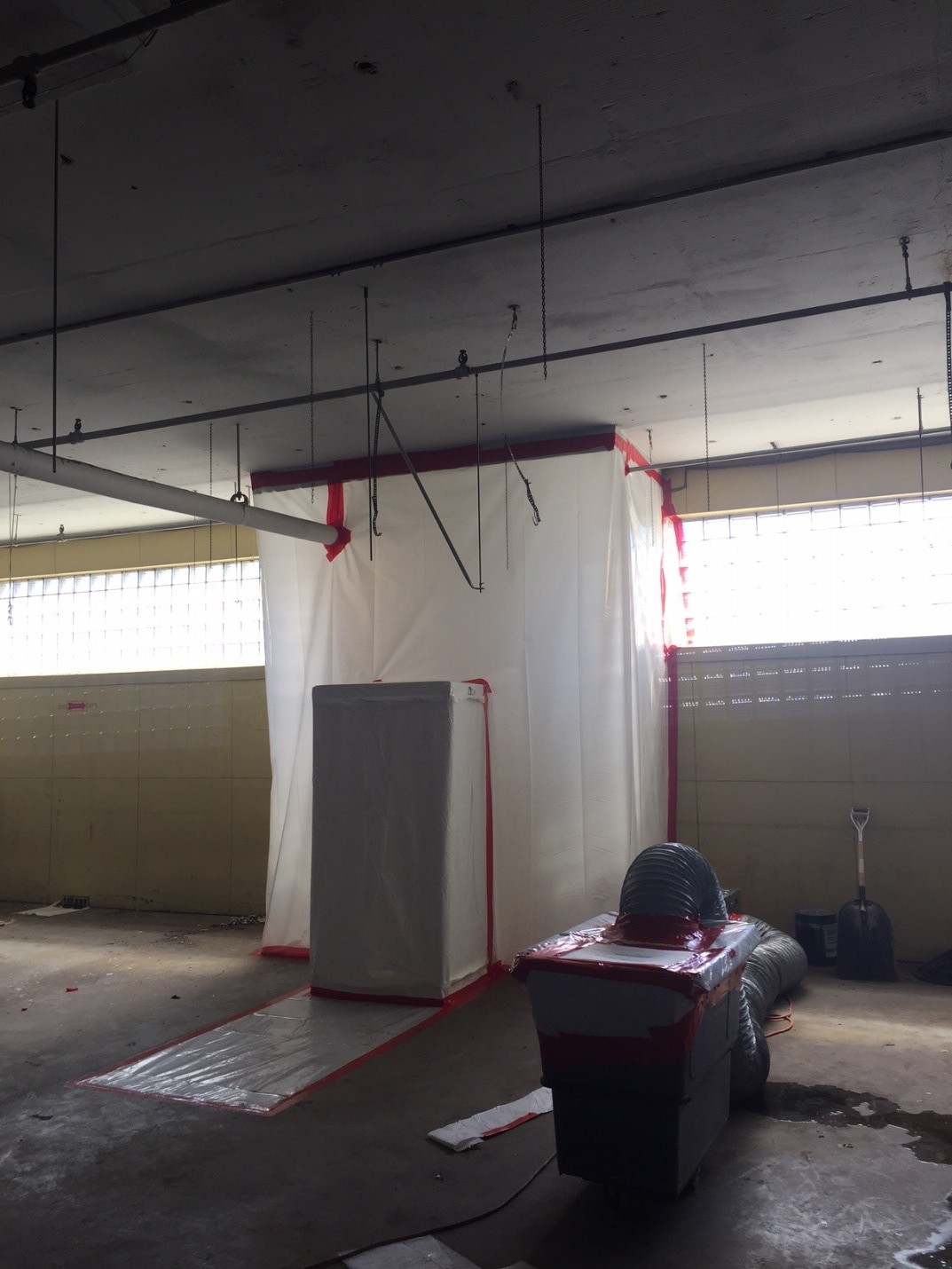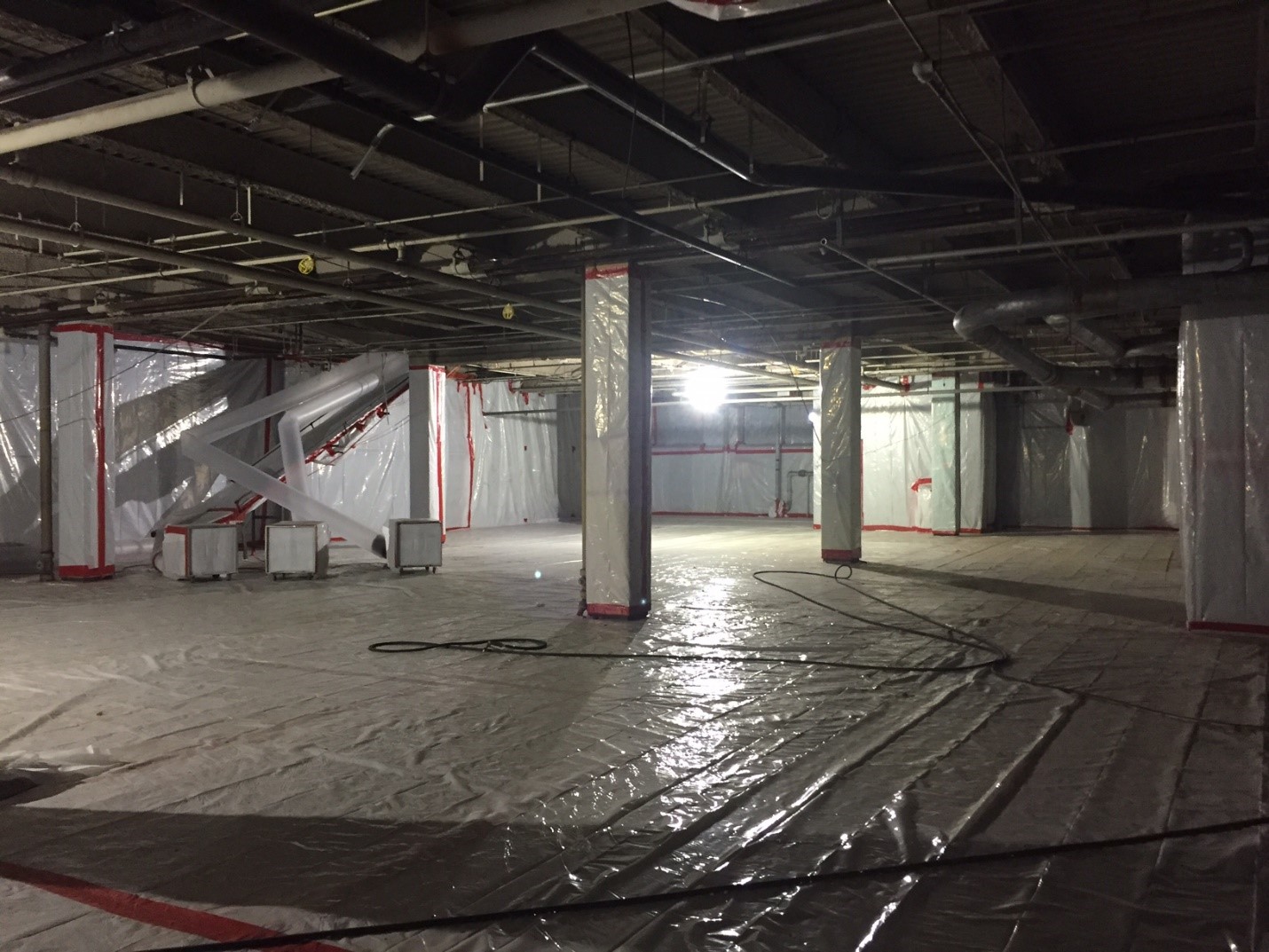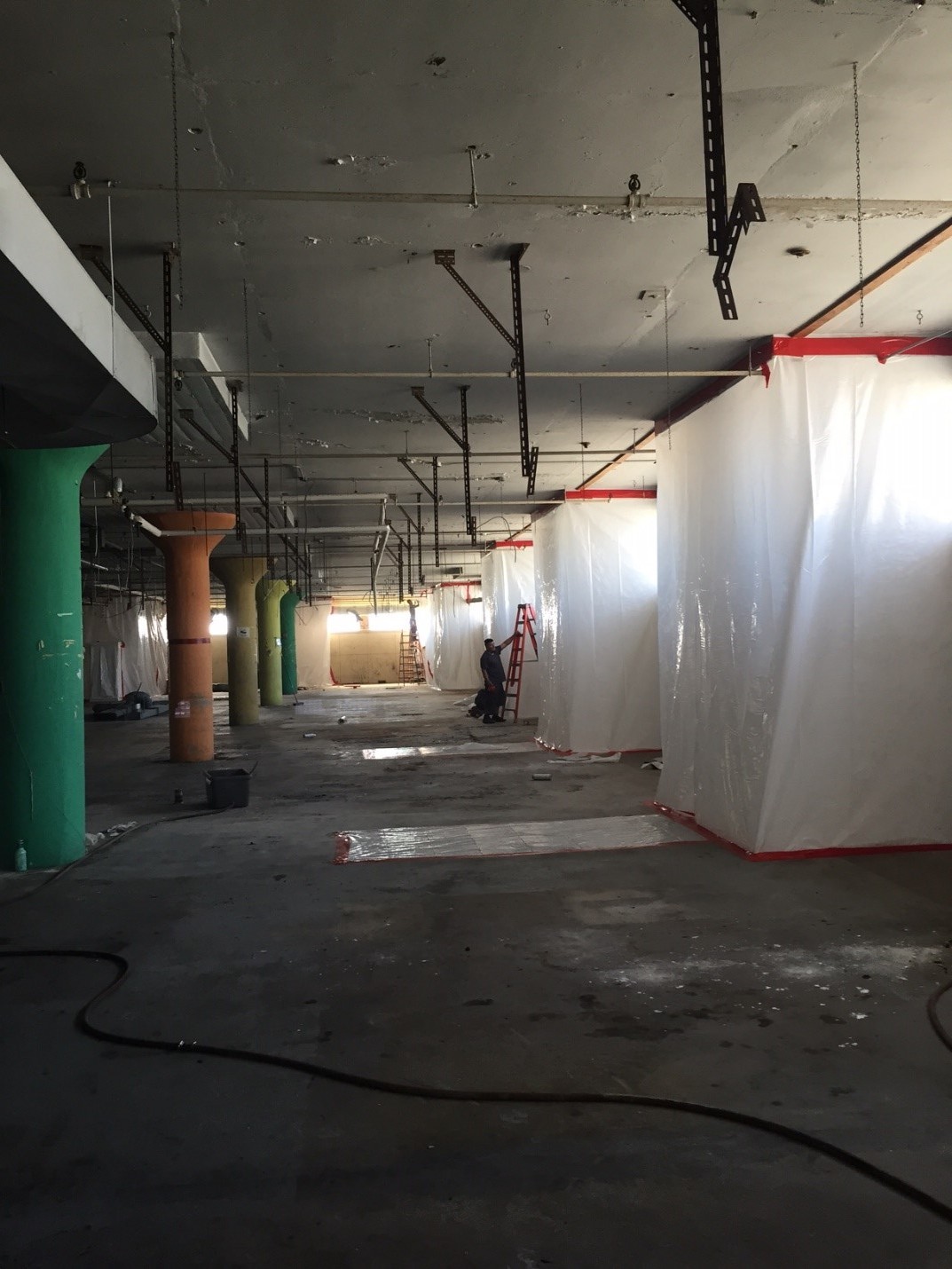Asbestos Abatement & Remediation
Since 1990, Plymouth Environmental has been a leading Asbestos Abatement Contractor in the Philadelphia, Southeastern Pennsylvania, New Jersey and Delaware regions. Plymouth has completed thousands of Asbestos Abatement projects on time, within budget and have been exceeding our client’s expectations for over 25 years. Environmental problems are often unexpected and they’re always unwelcome. But with the right navigator and crew, your passage can be swift and sure.
We remove the following Asbestos Containing Materials and more on a regular basis:
-
Flooring Products like Vinyl Flooring and Mastic, Carpet Mastic, Cove Mastic and Vapor Barriers
-
Acoustical Plaster, Ceiling Panels, Popcorn Ceiling Texture, Ceiling Tiles/Mastic
-
Cement Board Transite Products in Chimney Flue Lining, Ducts, Pipes, Shingles, Siding and Wall Panels
-
Chalkboards and Mastic
-
Electrical Products like Cloth wire insulation, Electrical breakers, Electrical, Panel Arc Chutes, Electrical Panel Partitions, Electrical Panels and Insulating Cloth
-
Fire Protection Products like Fire Blankets, Fire Curtains, Fire Doors and Spray-On Fireproofing
-
Heating and Cooling System Products like Boiler Insulation, Boiler Breeching Insulation, Cooling Towers, Duct Work Insulation, Furnace Insulation, Gaskets, Heat Shields, HVAC Vibration Dampeners, Pipe Lagging Insulation, Pipe Elbow Insulation, Tank Insulation, Tank Casings and Thermal Taping Compounds
-
Laboratory Hoods, Tables and Countertops
-
Roofing Products like Base Flashing, Felt, Shingles and Tar
-
Wall Products like Decorative Plaster, Caulking and Putties, Spackling Compounds, Vinyl Wall Coverings, Wall Penetration Packing Materials, Wallboard Joint Compound and Wallboard or Sheetrock
-
Window and Door Glazing
-
Vermiculite in Attic and Wall Insulation
We work with the area’s leading Property Owners and Developers, Schools & Universities, Hospitals & Healthcare Facilities, Industrial and Pharmaceutical Plants, General Contractors and many other facilities.
Other firms can handle the hazards, but at Plymouth, that’s only part of the equation. We go beyond the science and the skills, because what you really need accurate budgets, precise timelines, solid insurance and as little downtime as possible. We know the critical challenge is to keep your business working while we remediate the problem. Plymouth’s long list of successful projects and experienced professionals give you the confidence that your cleanup work will be done on time, within budget, and with the absolute bare minimum of disruption to your existing operations.
Why Choose Plymouth?
When it comes to the science of Asbestos Abatement & Remediation, we really mean business. We know the regulations and the remedies, and we know how to asses, plan and complete the work so you can get on with yours…
-
All of our executives and field superintendents have 15-25 years experience in designing and managing complex remediation projects.
-
All of our field workers are comprehensively trained and certified in full accordance with HUD, EPA, OSHA and state guidelines.
-
All of our staff members maintain a strong commitment to your employees as well as ours to provide a safe workplace.
Asbestos Project? Call Plymouth at 610.239.9920
Our goal is to get you cleaned up and back to normal – efficiently, without interruption, at a minimum cost and, always, safely.
The Asbestos Abatement Process
1. Testing for the Presence of Asbestos
Prior to the start of any maintenance, renovation or demolition project you should be aware of the presence of any asbestos containing material. Plymouth works with the leading Environmental Consultants that can provide the proper Due Diligence, Asbestos Testing and Phase I & II Environmental Site Assessments for all types and sizes of Industrial Complex, Commercial Facilities, Residential Facilities, Health Care Facilities and Educational Facilities.
2. Asbestos Removal Project Design
No project is ever the same, that’s why for each project Plymouth establishes and monitors a site-specific safety plan on a daily basis. Based on your specific project, Plymouth designs and implements an asbestos abatement work plan that strictly adheres to all EPA and OSHA regulations for the removal of asbestos containing materials. This includes all necessary permits or notifications to local or state authorities that must include the project plan as well as certification of any and all workers who will be involved with the project.
3. Pre-Asbestos Abatement Procedures
The right pre-asbestsos abatement procedures are critical to ensuring a safe workplace. All of our superintendents and workers are EPA and OSHA trained and certified in setting up and building containments with polyethylene sheeting sealed with tape. Negative air machines are set up in the containment to ensure proper air flow during the removal process. Depending on the project an Environmental Consultants will take pre-abatement air samples and monitor the air throughout the removal process. These steps are critical to keep our employees and you safe!
4. Asbestos Abatement Procedures
After the containment is set up our workers put on their protective suites, gloves, glasses and respirators as our Superintendent and Environmental Consultant monitor the activities outside containment. We team up with a third party Environmental Consultant that monitors the air before, during and after asbestos removals to make sure the air is clean of asbestos fibers. To prevent fibers from reaching the air the asbestos material is typically wet down with amended water and removed by hand or state of the art tools and equipment. This material is put in clear polyethylene trash bags, sealed shut and than ready for disposal.
5. Post Asbestos Abatement Procedures
After all the asbestos is removed and bagged, the third party Environmental Consultant takes final air clearance samples. Once the air is deemed clean we are able to remove the containment and dispose of all trash. The trash must be taken to a certified asbestos landfill. Once the job is complete, we provide a summarized report of asbestos removal activities, air monitoring results, and waste manifests.
Asbestos FAQ's
What is Asbestos?
Asbestos refers to a set of six naturally occurring fibrous minerals. Asbestos has six primary sub-classifications: chrysotile, crocidolite, amosite, anthophyllite, tremolite, and actinolite. Although asbestos fibers are microscopic in nature, they are extremely durable and resistant to fire and most chemical reactions and breakdowns. These properties of asbestos were the reasons that supported its use for many years in a number of different commercial and industrial capacities. The strength of asbestos, combined with its resistance to heat, allowed it to become the material of choice in a variety of products, including, but not limited to, roofing shingles, floor tiles, ceiling materials, cement compounds, textile products, and automotive parts. Asbestos is now strictly regulated as exposure to this toxic mineral can now be directly and scientifically linked to a number of lung and respiratory health conditions.
Read more: http://www.mesothelioma.com/asbestos-cancer/what-is-asbestos.htm#ixzz3W4YZAx8g
Why is Asbestos Hazardous?
The use of asbestos sharply declined in the late 1970s when it became evident that asbestos posed a threat to human health and safety. Today, asbestos is classified as a known human carcinogen. The property of durability—which made asbestos so desirable to manufacturers—is that which makes asbestos hazardous. Asbestos fibers are microscopic (roughly .02 the diameter of a human hair), and therefore, are easily inhaled. Once inhaled, the fibers cling to the respiratory system, including the lining of the lungs and inner cavity tissue. As asbestos fibers are typically quite rigid, they become lodged in the soft internal tissue of the respiratory system and are not easily expelled or broken-down by the body.
Hundreds of thousands of people were exposed to asbestos in some capacity as a result of the mineral’s extensive use in domestic, commercial, and industrial products. There is no safe type of asbestos and no safe level of exposure. Nearly all those with exposure history are potentially at risk of serious respiratory health complications.
Read more: http://www.mesothelioma.com/asbestos-cancer/what-is-asbestos.htm#ixzz3W4aBaZmZ
Who is At Risk of Exposure to Asbestos?
There were hundreds of occupations affected by asbestos exposure. Asbestos was used in thousands of commercial products and industrial capacities and those working with the material in these industries are potentially at risk of harmful exposure. Industries in which asbestos use was particularly prevalent include shipbuilding, commercial product manufacturing, power plants, and construction. Workers employed in these industries prior to 1980 likely encountered asbestos products.
While asbestos exposure is hazardous, not all asbestos products are inherently hazardous. Because asbestos must be inhaled to represent a health risk, only loose asbestos fibers or those in the air supply (a condition known as friable) represent a true hazard. Stable asbestos compounds, such as intact cement, tiles, or other products are generally not an immediate hazard.
Exposure to friable asbestos fibers was common when grinding, chipping, demolishing, or retrofitting asbestos products. Each of these functions could potentially release asbestos into the air supply where it would be easily inhaled.
Read more: http://www.mesothelioma.com/asbestos-cancer/what-is-asbestos.htm#ixzz3W4ahtCH8
What Health Conditions are Associated with Exposure to Asbestos?
There are three major lung conditions traced directly to asbestos exposure. These are lung cancer, mesothelioma, and asbestosis. Lung cancer risk, typically associated with tobacco use, is known to be exacerbated by exposure to asbestos. Symptoms include coughing, chest pain, and difficulty breathing.
Mesothelioma is a rare and aggressive cancer of the lung and inner body’s cavity lining- a thin membrane known as the mesothelium. Mesothelioma is typically recognized as the most clearly attributable disease resulting from asbestos exposure. Mesothelioma originates in three locations. Pleural mesothelioma forms in the lining of the lungs and is the most common form of the disease. Peritoneal and pericardial mesothelioma are less common and form in the lining of the abdominal cavity and lining of the heart, respectively.
Asbestosis is a degenerative and progressive non-malignant long-term respiratory condition. Asbestosis results from the formation of scar tissue plaques on the visceral surface of the pleura. Asbestosis can represent a pre-cursor to the onset of mesothelioma.
Read more: http://www.mesothelioma.com/asbestos-cancer/what-is-asbestos.htm#ixzz3W4b5WSSi






